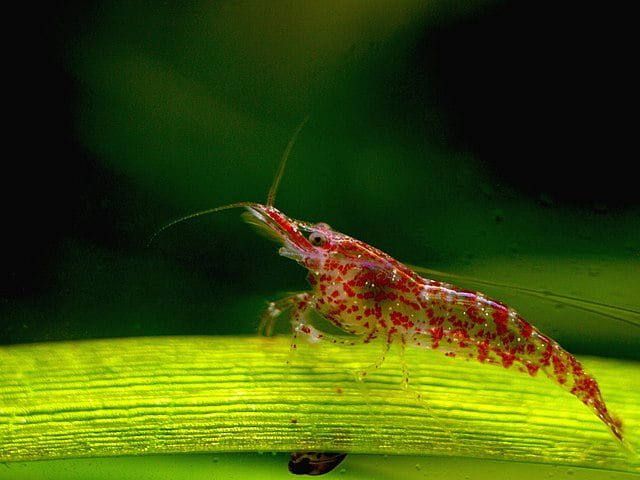
An innovative approach in aquaculture is polyculture, where multiple species are raised simultaneously in the same system. This practice can optimize resource utilization, reduce environmental impact, and increase economic returns. Raceway-based biofloc technology has emerged as a promising method for polyculture, providing a controlled environment for the cultivation of aquatic organisms.
Researchers from Tamil Nadu Dr. J. Jayalalithaa Fisheries University (India) published a study in the journal Aquacultural Engineering, where they evaluated the efficiency of raceway-based biofloc technology for the production of Penaeus vannamei and genetically improved farmed tilapia in a polyculture model.
Integration of BFT, Raceway, and Polyculture
The integration of BFT, raceway farming, and polyculture presents an exciting opportunity for sustainable aquaculture. By combining these techniques, it is possible to:
- Improve water quality: Microbial communities in BFT can help enhance water quality, while raceway farming can efficiently remove waste products.
- Reduce environmental impact: By minimizing effluent discharge, raceway and BFT farming can significantly reduce aquaculture’s environmental footprint.
- Increase productivity: Polyculture can optimize resource utilization and improve overall productivity.
- Enhance economic returns: By improving efficiency and reducing costs, these integrated systems can increase economic returns for aquaculture producers.
A Case Study: Shrimp and Tilapia
The combination of BFT, raceway farming, and polyculture is particularly promising for shrimp and tilapia production. These species have complementary feeding habits and can coexist harmoniously in a polyculture system. By incorporating BFT and raceway farming, it is possible to optimize water quality, reduce feed costs, and improve overall production efficiency.
Study Objectives
This study aimed to investigate the effectiveness of raceway-based biofloc technology for the polyculture of Penaeus vannamei (white shrimp) and genetically improved farmed tilapia (GIF). Specifically, the research focused on:
- Growth performance of both species
- Digestive enzyme activities
- Bacterial counts in the culture water and the organisms’ intestines
- Histological changes in the gills and internal organs
Methodology
Six raceway tanks were used to compare the performance of P. vannamei and GIF tilapia raised in biofloc and clear water systems. The tanks were stocked with shrimp and fish at densities of 60 individuals/m³ and 5 individuals/m³, respectively. The biofloc was developed and maintained using soybean shell pellet powder as the organic carbon source, with continuous aeration. The experiment lasted 90 days.
Results
- Growth performance: Both P. vannamei and GIF tilapia exhibited significantly higher weight gain in the raceway-based biofloc system compared to the clear water system.
- Digestive enzyme activities: The biofloc system promoted higher levels of protease, lipase, and amylase activities in the digestive tracts of both species, indicating better digestion and nutrient assimilation.
- Bacterial counts: Total heterotrophic bacteria and bacillus counts were significantly higher in the culture water, the intestines of P. vannamei, and the intestines of GIF tilapia in the biofloc system. This suggests a healthier microbial environment and potentially improved nutrient cycling.
- Histopathology: No significant histopathological changes were observed in the intestines and hepatopancreas of P. vannamei and GIF tilapia in either system. However, gill deformities were observed in GIF tilapia raised in the clear water system, suggesting possible adverse effects of water quality.
Conclusion
‘The present polyculture study with P. vannamei and GIF tilapia in a hybrid raceway-based biofloc technology system exhibited high organism growth, allowed better control of water quality, and provided optimal conditions for the growth of heterotrophic bacteria,’ the researchers conclude.
The results of this study demonstrate the advantages of polyculture of Penaeus vannamei and GIF tilapia in a raceway-based biofloc system. The biofloc system provided a superior environment for the growth, digestion, and overall health of both species. The increased bacterial diversity and improved water quality in the biofloc system likely contributed to the observed benefits.
Stay Always Informed
Join our communities to instantly receive the most important news, reports, and analysis from the aquaculture industry.
This research highlights the potential of raceway-based biofloc technology for sustainable aquaculture practices and offers valuable insights for future studies and commercial applications.
The study was funded by the ‘Prime Minister’s Fellowship for Doctoral Research,’ a joint initiative between the Confederation of Indian Industry (CII), Science & Engineering Research Board (SERB), and Murugappa Fish Feeds.
Contact
M Joshna
Department of Aquaculture, Tamil Nadu Dr. J. Jayalalithaa Fisheries University, Dr. M.G.R Fisheries College and Research Institute
Ponneri – 601 204, Tamil Nadu, India
Email: joshnareddy275@gmail.com
Reference
Joshna, M., Ahilan, B., Antony, C., Ravaneswaran, K., Chidambaram, P., Uma, A., Ruby, P., Prabu, E., & R, S. S. L. (2024). Influence of raceway based biofloc system on the growth and physiological responses of Penaeus vannamei and GIF tilapia in a polyculture model – BFT aquaculture system. Aquacultural Engineering, 102463. https://doi.org/10.1016/j.aquaeng.2024.102463
Editor at the digital magazine AquaHoy. He holds a degree in Aquaculture Biology from the National University of Santa (UNS) and a Master’s degree in Science and Innovation Management from the Polytechnic University of Valencia, with postgraduate diplomas in Business Innovation and Innovation Management. He possesses extensive experience in the aquaculture and fisheries sector, having led the Fisheries Innovation Unit of the National Program for Innovation in Fisheries and Aquaculture (PNIPA). He has served as a senior consultant in technology watch, an innovation project formulator and advisor, and a lecturer at UNS. He is a member of the Peruvian College of Biologists and was recognized by the World Aquaculture Society (WAS) in 2016 for his contribution to aquaculture.




